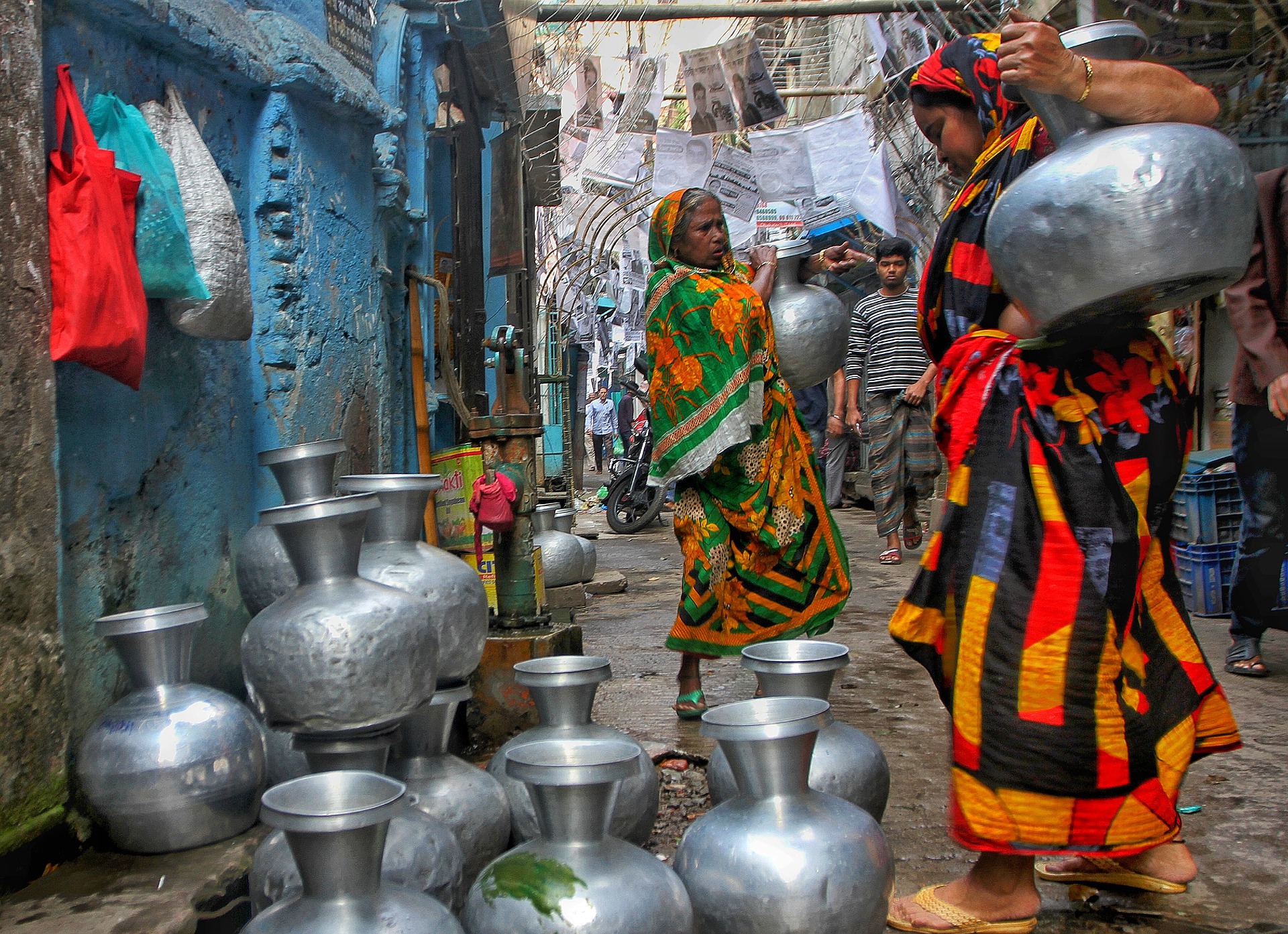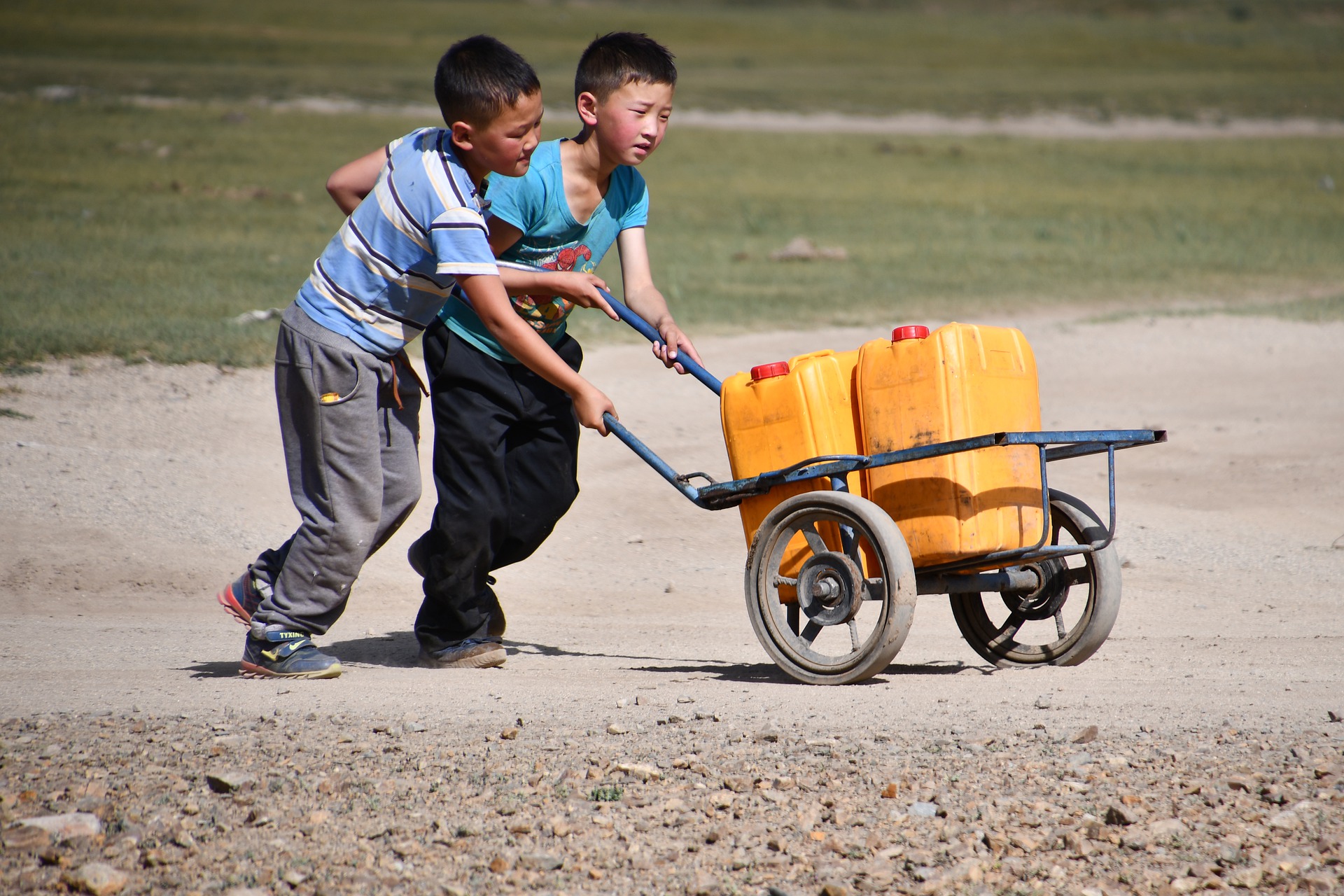
 By Dr. Indira Khurana*
By Dr. Indira Khurana*
The recent floods in states across India and the world’s cities have shown the Achilles’ heel in urban planning and infrastructure development
The solution lies in managing water responsibly
Climate change is changing the hydrological cycle at a rapid pace. It’s now becoming almost impossible to keep track of extreme weather events, the geographical locations, number of people affected, lives lost, economic damage caused and infrastructure damaged. Photos of rainwaters inundating buildings and ‘road rivers’ from cities across the world now flood social media with disturbing regularity when extreme weather events occur.
Climate change is already altering where and when water will be available within and across countries. Suddenly it appears no place is safe. Who knows where and when the next climate hit will take place and how far the ripples will extend? For India, one of the most disaster-prone countries of the world, this is cause for alarm.

Many communities stand testimony to their water supplies shrinking as temperatures rise and precipitation patterns shift, straining ecosystems and threatening the survival of species. As severe storm events surge and sea levels rise, and unprecedented floods almost immediately follow drought, humanity is left struggling to cope. These shifts have dramatic impacts on communities, threatening public health, livelihoods and food security, weakening economies and decreasing the quality of life.
It makes even more sense now to understand and protect natural ecosystems. Our blatant disregard of planetary boundaries and destructive and extractive model of development has stretched the limits of nature. In a move akin to shooting ourselves in the foot, we continue to damage the security provided by nature with impunity, destroying forests, wetlands, streams, rivers, ponds and lakes, ignoring that we are rapidly eroding the shock absorbers that nature provides against weather-related shocks. Efforts directed towards the protection and rejuvenation now need to be accelerated.
Protecting, restoring and rejuvenating natural shock absorbers
The solution lies in managing water responsibly. For this, a comprehensive approach, can include:
a) Replenishing the depleting groundwater aquifers: Groundwater provides nearly half of the water used for irrigation and drinking water for billions of people. But groundwater aquifers are under threat because of unsustainable extraction. A 2021 global data analysis of some 39 million wells across 40 countries by US scientists Jasechko and Perrone of the University of California has revealed that up to 20 per cent of wells worldwide are at risk of running dry. India’s Central Groundwater Board estimates that some 167 per cent of groundwater blocks are overexploited, while 5 and 14 per cent respectively are at critical and semi-critical stages. According to NASA water scientist Jay Famiglietti, of the world’s 37 major aquifers, about 20 are past sustainability tipping points and correspond to our major food-producing regions. A 2021 study by Meha Jain of the University of Michigan has found that winter harvests in some regions could fall up to two thirds by 2025 in India due to groundwater overuse.

Groundwater reserves are veritable water banks. Facilitating groundwater recharge would help build up this water bank, provide base flows in streams and rivers and also offer some protection against flooding and water scarcity. India can easily dive into its diverse eco-region specific and time-tested decentralized technologies to replenish aquifers. Floodplains, natural recharge zones of rivers can be used as well. The successful cases that dot the Indian diverse landscape offer solutions that need to now be scaled up.
b) Improving the health of rivers: In protecting and restoring rivers we are actually doing ourselves a favour, by securing drinking water, food, livelihoods, culture, heritage and saving these climate shock absorbers. Most importantly we are securing peace of mind and a sense of security. Sources of rivers need to be protected, rivers need to flow and not be used as dumping grounds for our waste, solid and liquid. In several states in India, communities are coming forward to clean up river banks, protect catchments, build water conservation structures to revive flow and rebuild people-river connects. Globally also, efforts are ongoing to improve the health of rivers and communities that reside alongside these rivers, such as the Mississippi and Colorado in the US, Magdalena in Columbia, Tana river in Kenya, Kamala river in Nepal and Credit river in Canada. In 2017, New Zealand granted legal personhood to the Whanganui river, after a struggle for more than 160 years by the Maori, the indigenous Polynesian people of New Zealand.
c) Protecting and regenerating forests: By protecting and regenerating forests, we protect water: Several rivers arise from the forests. Forests help control the water cycle, help capture water, regulate surface and groundwater flows, reduce silt load and perform other ecosystem functions that facilitate the water cycle. Importantly, forests help reduce water-related risks such as landslides, floods and drought. While more than 100 countries pledged to reverse and halt deforestation by 2030, the unnerving frequency with which extreme events have occurred around the world in 2021 alone begs for immediate action.
d) Rethinking urban development: The recent floods in states across India and the world’s cities have shown the Achilles’ heel in urban planning and infrastructure development, with all the concretization, cutting down of trees, destruction of natural water channels and encroachment of urban water bodies. Already the urban scenario is such that streets are flooding with increasingly lesser amounts of rainfall. With the monsoons now dumping copious amounts of rain, cities are drowning.
A new approach for urban ecosystems is necessary. Extravagant and wasteful urban needs are sucking water from the river such as the Yamuna. Groundwater tables are declining. One major move should be to reduce the planned water demands for urban needs, which currently is at 220 lpcd. When drinking water and cooking water requirements are pegged at 10 lpcd, freshwater use can be reduced to 25 per cent of this figure using technologies, reuse of wastewater and storage of storm water for other needs. Car washing must stop. Reducing the urban water needs will help in building up river flows and reducing groundwater extraction.
Groundwater aquifers need to be recharged at maximum possible locations along the storm water drainage systems so that the overflow of the drains resulting in flooding is prevented. Provision of lateral mechanical groundwater recharge systems below the built-up areas can help in creating massive groundwater storage. Steps to prevent pollution of aquifers by these measures will need to be undertaken.
Planning urbanization in new areas should keep intact the existing drainage channels and urban ponds and lakes. It makes even more sense if new waterbodies are created and connected with the existing ones. This will help curtail flooding and save water for the lean seasons, thus creating resilience and even lowering the temperatures of the built-up areas in hot climate zones. Moreover, even in urban spaces, people love to live around waterbodies: These waterbodies will add value to the prices of the properties.
e) Decentralised and ecology-centered livelihoods and economic growth: Cropping patterns must be based on the ecology – the type of soil, climate and water availability. It does not make sense to cultivate sugarcane, a water guzzler in areas where water availability is low. Similarly, urban ecosystems also need to factor in ecological considerations, natural resources available, measures to protect these and carrying capacities.
f) Adopting pro-equality approaches: Unequal water access widens and deepens inequality and poverty, and water-related disasters even more so. In an already unequal world where communities with the smallest natural resource use and minimal carbon footprint bear the largest consequences, unless the situation reverses, the unfolding scenario will only lead to more distress migration and refugees seeking asylum and in some cases conflict and disruption of peace.
g) Acting on evidence: COVID 19 pandemic and climate change are but two examples, where political leadership has not based or invested their politics, policy, and finances following the evidence that science has produced. Political action around mitigation, adaptation and building resilience as evident in COP 26 at Glasgow this year has not been commensurate with the compelling evidence of the destruction possible by climate change, in spite of thousands of scientists adding their signatures to appeals. This inaction has compelled scientists to protest: During COP 26 in Glasgow, Scientists Rebellion made history with the first mass arrest of scientists. They’re already planning their moves for COP 27 next year.
Radical yet doable shifts are now needed, and unless these happen, local communities and national economies will continue to buckle under the burden of nature’s stress. Will political leadership pick up this gauntlet? Will the people themselves act? Time will tell.
*Indira Khurana, PhD, is the chairperson of the Indian Himalayan River Basin Council





